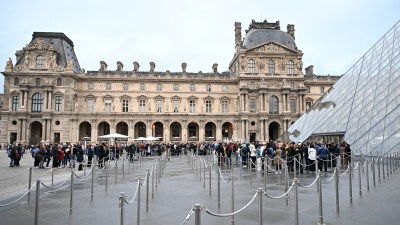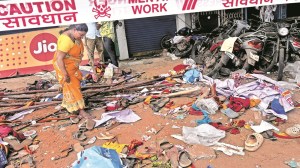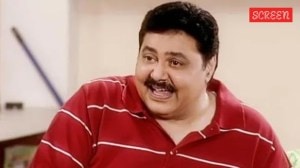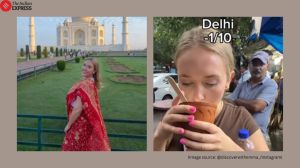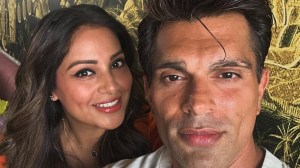The colour of heaven
WE were being followed. He stopped when we stopped, walked when we did, even waited outside a tea stall while we went in for a cuppa. A bla...

WE were being followed. He stopped when we stopped, walked when we did, even waited outside a tea stall while we went in for a cuppa. A black mongrel with a white Indira-like streak and cute floppy ears had been following us for at least two hours, as we trekked from Chumoa to Namche Bazaar in the Nepal Himalayas. It was a very pleasant third day of our trek in the Solu Khumbu (Everest) region. Our journey began with a ride in a 20-seater plane from Kathmandu to Lukla. After two days of acclimatisation in Lukla, we’d headed to Chumoa where we’d spent the previous night .
Unlike most of the others on the trail, our destination wasn’t the Everest Base Camp. We were headed to the Gokyo lakes, which rate among the most beautiful high-altitude spots in the Himalayas. Crossing the winding Dudh Kosi river on the way up to Namche Bazaar, we repeatedly stopped for a breather, while several Nepalis passed us, each apparently effortlessly carrying a 50 kg sack of rice. Namaste, we were greeted in the typical Nepali sing-song. And we, barely with breath, responded likewise.
Finally we were at the large Sherpa village of Namche Bazaar spectacularly situated in the U-shaped mountainside. The next day, the Saturday Bazaar, for which this village gets its name, was bustling. The animated bargaining is mixed with all kinds of unusual smells and sights. Tibetan traders trek across Tibet, cross the Nangpa-la (pass) to come here and sell their wares. Others walk for 10 days to come and trade at this bazaar. Besides coats, shoes and all kinds of Chinese-made clothing, you can buy yak meat, intestines filled with yak butter, and even eggs carted all the way from India.
After two days of acclimatising in Namche, we headed to Mong-la, four-hours away. Our canine companion obviously was used to steep slopes and the routine of tea-house trekking and we unimaginatively named him Blackie.
No one expects to find an excellent German-style bakery in the middle of the Himalayas serving steaming hot apple pie, pepperoni pizza and butter croissants. The Everest bakery in Khumjung (3790 m) en route to Mong- transcended all dreams. Though food on the trail wasn’t bad, there’s something quite divine about freshly baked goods served piping hot after an exhausting uphill trudge. We ate like desert-weary travellers who had encountered an oasis, and Blackie, now a close pal, shared in our decadence.
At 1 pm, we reached our destination and parked at a rustic lodge. By 4 pm, the cold was biting and a swift wind had risen. Three layers of warm clothing seemed inadequate protection, so we huddled in the dining area warmed by a small heater. Blackie had befriended the lodge’s yak and curled into a tight ball near the hairy beast of burden. At dusk, the panorama of mountains around looked absolutely awe-inspiring, and later in the darkness, they shone like platinum pyramids suspended from the sky.
Early the next morning, we began our walk to Dole. When the trudge uphill began, I fell back a little, and enjoyed the walk alone. I felt amazingly safe and unhurried and took my time along this particularly lovely part of the forest and encountered a herd of Himalayan Thar and a lonely musk deer. The giant ferns, bubbly streams and wild flowers added to the joy.
In spite of my slow pace, by 9 am, I joined the others in Dole. On our way into Dole, we had all noticed some large patches of snow further up the hillside. So, after breakfast, armed with large plastic sheets, we headed out to the snows for some fun butt-skiing. We climbed to the top of the snow slope, sat on a plastic sheet, gave ourselves a push and went sliding down. The walk back up the snow slope each time was tiring, for the air was thin and cold. Blackie refusing to be left out, ran up the slope and attempted to sit on my lap. I held him and whizzed once again down the slope. On a whim, a snowball fight erupted. What I imagined as fun with fluffy white snow, turned out to be a rather aggressive game. And snowballs hurt!
A short two-hour trek the following day and we stopped at Machermo. We could have gone on, but didn’t because it’s imperative to ascend slowly. The next day, we walked across some of the world’s most incredible mountain scenery and passed the first Gokyo lake (a tiny pond), and the second, a much larger half-frozen lake that’s home to a pair of Brahminy ducks. Finally, we walked for an hour along the rim of the magnificent blue expanse of the third Gokyo lake, and reached the settlement of Gokyo where we spent two days. The placid lake shimmered in the brilliant sun. The colours before us were spellbinding. Blues of turquoise, of the Mediterranean, of the heavens.
Mr. Sharma runs the Gokyo resort. Originally from Bihar, he’s spent 10 years running this lodge 15,670 ft above sea level. He produced interesting inch-thick alu parathas for lunch as we basked in the glass sunroom, enjoying the outdoors minus the cold. A loud crashing sound startled us, but Sharma was unfazed. “An avalanche,” he said matter-of-factly, and we looked up just in :time to see another snowy section crash down a slope across the lake.
Three times that night I awo gasping for breath. The altitude does that to you we had read. But we awoke at 4 am anyway because we’d been assured that the best views awaited us on atop Gokyo Ri. Three hours later at the summit, everyone had a dull headache from the altitude. But, when the clouds lifted, stretched out in front of us were some of world’s most amazing peaks — Everest, its exquisite neighbours Ama Dablam, Lhotse and Nuptse, and a host of other Himalayan beauties. Below, Sharma’s resort was a tiny speck and the thick river of dark moraine is the Ngozumpa glacier. Further, the frozen surface of the fourth Gokyo lake looks part of a barren moonscape.
Gazing at the expanse in front of me, I had an overwhelming sense of the vastness and beauty of the landscape and of how really insignificant I am within it. Of how in the wilderness of the mountains, with a cold wind clipping at my chin, a 14-day walk from urban civilisation, everything I might have achieved or am proud of is but an inconsequential fragment in the cosmos’ wheel of time.
GETTING THERE
• Buy a good trekking guide for the Everest region. Trekking in the Everest Region (Trailblazer guide) by Jamie McGuiness is the best, but Lonely Planet’s Trekking in the Nepal Himalaya is also useful. If you can’t find them in a bookstore, they’re available in shops all over Kathmandu.
• It’s safe to go by the guide and trek on your own. Pay close attention to any signs of altitude illness.
• Acute Mountain Sickness or High Altitude Sickness can be fatal. Read up on it so that you can recognise the signs, and take precautions.
• If you don’t want to go on your own, Kathmandu has many trekking firms who will organise your trip for a price. Ask fellow travellers in Thamel who they used, ensure you know exactly what will be included in the price, and don’t just go with the cheapest offer.
• If you don’t want to go with a guide or trekking company, get a porter to accompany you. If you get a porter in Kathmandu, you will have to pay his airfare. Go by the recommendation of other travellers or of your lodge in Lukla. You should feel comfortable with the person, if you don’t, get someone else. Get an all-inclusive daily price that covers the porter’s meals.





- 01
- 02
- 03
- 04
- 05


